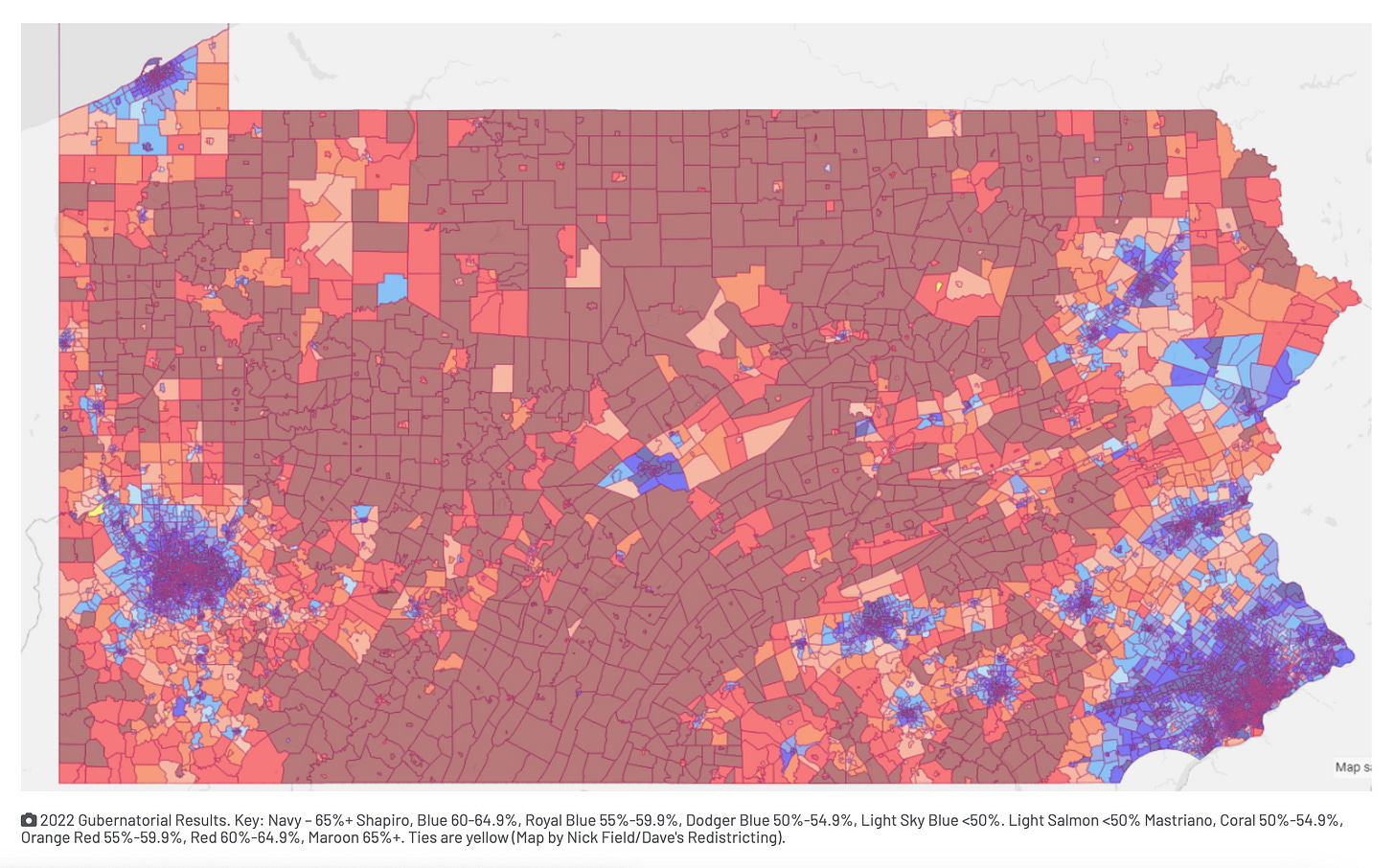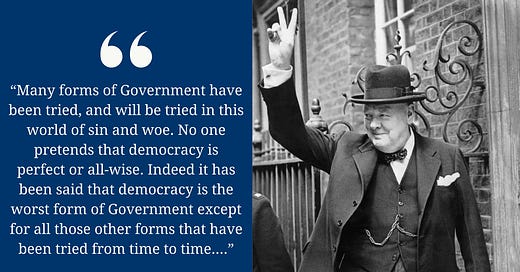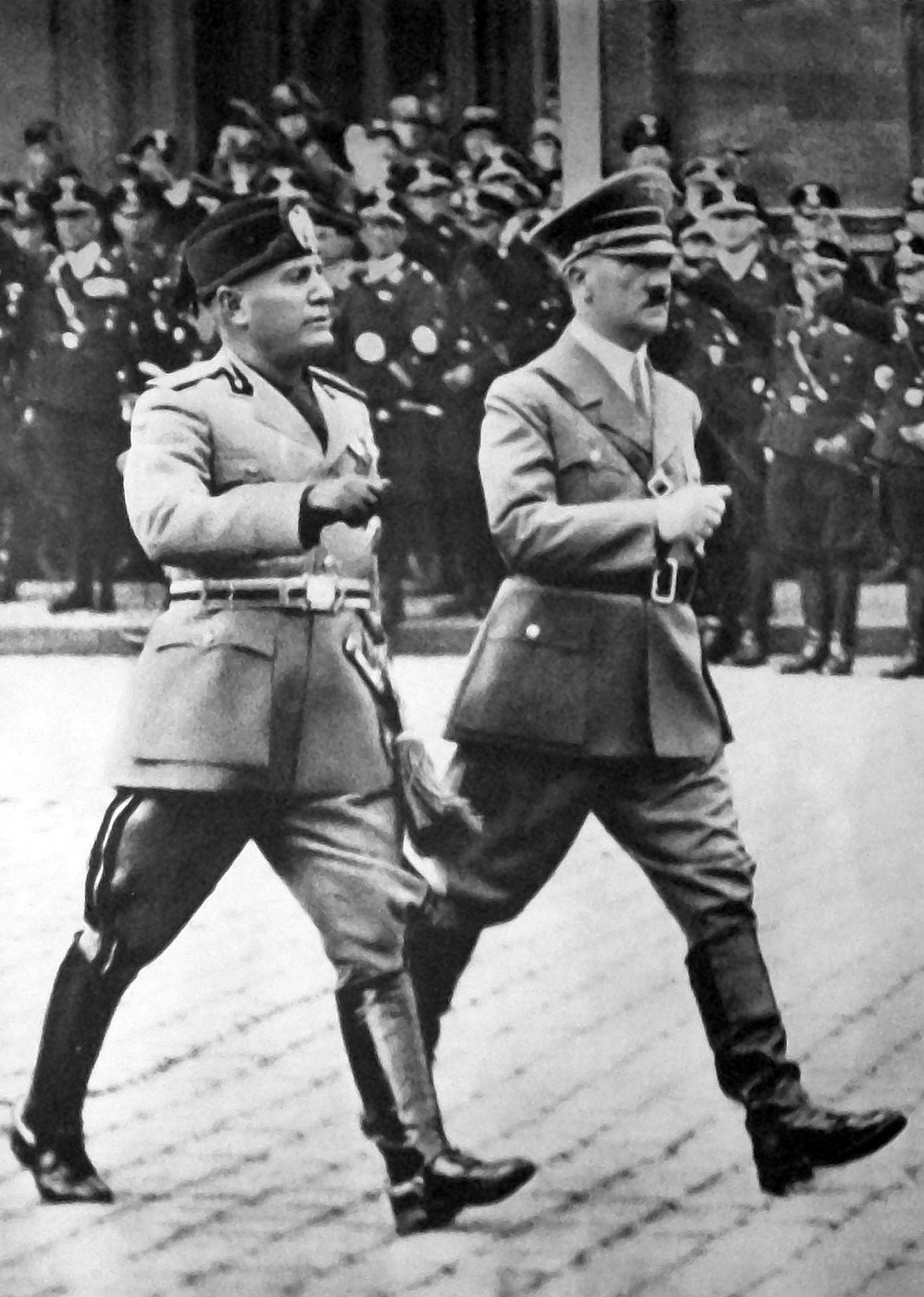Chapter Ten: The Tragedy of American Democracy
What Happens If The Popular Vote Winner Loses Again?
The United States is divided as it has not been divided since the end of the Civil War in 1865. The defining issue in this year’s election is Donald Trump. Almost half the nation is for him. Almost half the nation is against him. In the middle is a tiny slice of undecided voters.
It is customary to divide the country into red Republican states and blue Democratic states. According to the website 270 To Win, states that are safe for Republicans plus those leaning that way account for 219 electoral votes. For the Democrats, the corresponding number is 226. That leaves 93 electoral votes in seven swing states still in play. A candidate must receive a majority of the electoral votes to win the election. If no one gets to 270, the election is decided in the House of Representatives, where each state is entitled to one vote. Since there are more Republican than Democratic states, Trump would be elected in that eventuality.
In a remarkable recent Substack post by Columbia University political scientist Adam Tooze, the situation of those seven swing states is examined. They have rather little in common.
As he digs deeper, Tooze employs the idea of another political scientist, David Schultz of Hamline University, whose research suggests that one must look not just at swing states but rather at swing counties within those states. According to Schultz, 5% of the votes in five counties could elect the next President. “For me,” Schultz has said, “this presidential campaign is coming down to maybe 150,000 votes that are decisive.”1
According to Tooze2, there are 161 million registered voters in the United States. How is it possible that the American election, affecting as it does the whole world, comes down to a handful of voters randomly scattered through a couple of counties in randomly selected states?

The answer is the electoral college. The 161 million voters don’t vote for the President. They vote for electors in their respective states that in turn vote (or at least are supposed to vote unless they prove faithless) for the candidate that received the most votes in their state.
We can say with absolute certainty that if the electoral college did not exist, no one would invent it today. It was created as an afterthought. Only following “months of indecision, disagreement, and ‘reiterated discussions’” did the “weary delegates” to the Constitutional Convention in the summer of 1787 put the question of how to choose the nation’s chief executive into the hands of a committee of “postponed parts.”3
The electoral college has never functioned as originally envisioned and has distorted American politics in innumerable ways. Recently, it has served as a potent de- legitimizing force against the American political system.
There have been five “wrong winner” elections in American history, wrong winner being defined as an election in which the winner of the popular vote lost the election because he did not win the electoral vote. These elections took place in 1824, 1876, 1888, 2000, and 2016. There have been a staggering 20 “near misses” – elections in which the change of a small number of votes would have made the popular vote winner the electoral vote loser. From 2000 to today, there have been six Presidential elections. Of these, two – 2000 and 2016 – were were wrong winners. And two – 2004 and 2020 – were near misses.4 This is an appalling record for anyone believing that all votes should be treated equally.
Why are we stuck with this wretched system, described by Professor Alexander Keyssar of the Harvard Kennedy School as “a complex process that has been widely criticized and sometimes condemned outright, a process that does not conform to the democratic principles the nation has publicly championed -- a process that is ill understood by many Americans, bewildering to nearly everyone abroad, and never imitated by another country or by any state of the United States.”5
Keyssar observes that the “most prominent structural obstacle has always been the difficulty of amending the United States Constitution.”6
Let us consider that observation.
In 1962, Alfred D. Chandler, Jr., the creator of the modern field of business history, published a pathbreaking study entitled Strategy and Structure.7 To make a long story short, structure is supposed to follow strategy. A company’s strategy should lead. Its structure should facilitate the chosen strategy.8 This is no less true for governmental organizations.
In the electoral college story, “structural obstacles” have prevented the creation of a national popular vote strategy in which all votes are equal. The tail is wagging the dog. Our country has it backwards.
Presidential elections in the late 19th century were hotly contested. In 1884, the Democrat Grover Cleveland defeated the Republican James G. Blaine by 219 electoral votes to 182. Cleveland received 48.8% of the popular vote, and Blaine received 48.3%. This was a near miss. Cleveland took New York by a mere 1,149 votes. If he had lost it and its 36 electoral votes, he would have lost the election.
In the next Presidential election in 1888, Cleveland lost to the Republican Benjamin Harrison by 233 electoral votes to 168. Harrison received 47.8% of the popular vote, while Cleveland received 48.6%. So this election was a wrong winner.
Hotly contested though they may have been, these elections did not matter much. If Blaine had defeated Cleveland in 1884 or if Cleveland had defeated Harrison in 1888, American history would not be all that different. Indeed, the same could be said of the election of 1960. John F. Kennedy defeated Richard Nixon handily in electoral vote terms but by only .17% of the popular vote. If you watch the famous debates of that year, you will see that Kennedy and Nixon actually agreed a number of times.
Today, however, the nation’s situation is quite different. Much is made of the fact that if Kamala Harris is elected, she will be the first woman, the first person of South Asian background, and the second African-American to become chief executive. She is distinctive from the point of view of identity politics, but not so when it comes to policy. Like other politicians before her, she strives to be all things to all people in the swing districts of the swing states which will decide this election.
Donald Trump is an altogether unique case. He attempted to overthrow the government in 2020 and 2021. With the Supreme Court comfortably in his pocket, if re-elected he might succeed in bringing the political system created in 1787 to its end.
This election, therefore, matters a great deal. The chance of a Trump victory is greatly enhanced by the electoral college. His odds of winning the national popular vote are not good. But of course that does not matter at all.
What is the tragedy of American democracy? It is that our country is insufficiently democratic. Winston Churchill was right. Democracy is problematic. But look at what happens when countries abandon democracy. In a previous post, I published this picture of Hitler and Mussolini looking triumphant in 1937. Eight years later, they were both dead along with millions of people in the countries they ruled. Their nations were in ruins. Democracy may be problematic, but the problems inherent in it do not compare to those of dictatorships. As Thomas Jefferson said, “the sheep are happier of themselves, than under the care of the wolves.”9
The United States needs a structure that facilitates the strategy of the national popular vote. There is no prospect in the foreseeable future for a constitutional amendment eliminating the dead hand of the electoral college foisted upon us by history. There are, however, hopeful ways to mitigate the worst effects of the electoral college. These will be discussed in future posts.
Joe Hernandez, “How swing states came to be critical in U.S. Presidential elections,” (NPR NPR, August 29, 2024)
Adam Tooze, “Chartbook 323: Three theories of ‘swing states’” October 2, 2024.
Alexander Keyssar, Why Do We Still Have the Electoral College? (Cambridge, MA: Harvard University press 2020) p. 23.
George C. Edwards III, Why The Electoral College Is Bad For America (Cambridge, Eng: Cambridge University press, 2024} p. 75.
Keyssar, pp. 364 – 365.
Keyssar, p. 366.
Alfred D. Chandler, Jr., Strategy and Structure: Chapters in the History of the American Industrial Enterprise (Cambridge, MA: M.I.T. Press, 1962)
Chandler, pp. 52 – 113.
Quoted in Richard Hofstadter, The American Political Tradition and the Men Who Made It (New York: Vintage, 1989) p. 23.







What do you make of the argument that the electoral college provides a check to a ‘dictatorship of the majority’ where politicians only cater to wealthier cities in big states, ignoring the less populated rural areas? Does the current system not provide a sort of early warning system, indicating where some of these areas are experiencing discontent, *before* they explode into extra-democratic phenomena like rural guerrilla groups for example?